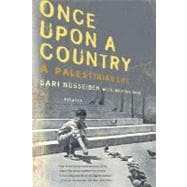
Note: Supplemental materials are not guaranteed with Rental or Used book purchases.
Purchase Benefits
What is included with this book?
| Prologue: A Fairy Tale | p. 3 |
| The Key | p. 15 |
| The Pan-Arab Nation | p. 21 |
| Promises, Promises | p. 25 |
| The Herod's Gate Committee | p. 38 |
| The Pepper Tree | p. 57 |
| A Grapevine | p. 85 |
| Smashing Idols | p. 104 |
| Sunflower | p. 129 |
| Monticello | p. 138 |
| The Lemon Tree Cafe | p. 151 |
| The Salon | p. 171 |
| Military Order 854 | p. 184 |
| Masquerade | p. 202 |
| Murder on the Via Dolorosa | p. 215 |
| Faisal Husseini | p. 229 |
| Annex Us! | p. 235 |
| Sticks and Stones | p. 248 |
| The Exorcism | p. 264 |
| A Declaration of Independence | p. 280 |
| Interrogation | p. 290 |
| Ramle Prison | p. 314 |
| Madrid | p. 336 |
| A Shadow Government | p. 353 |
| Oslo | p. 364 |
| The Disappearance | p. 383 |
| Porcupines and Roosters | p. 400 |
| Holy of Holies | p. 420 |
| The Possessed | p. 428 |
| Allies | p. 444 |
| Checkmate | p. 456 |
| The Iron Fist | p. 478 |
| "The Tigers" | p. 497 |
| The Perfect Crime | p. 510 |
| Epilogue: A Night Journey | p. 528 |
| Notes | p. 537 |
| Acknowledgments | p. 543 |
| Index | p. 545 |
| Table of Contents provided by Ingram. All Rights Reserved. |
The New copy of this book will include any supplemental materials advertised. Please check the title of the book to determine if it should include any access cards, study guides, lab manuals, CDs, etc.
The Used, Rental and eBook copies of this book are not guaranteed to include any supplemental materials. Typically, only the book itself is included. This is true even if the title states it includes any access cards, study guides, lab manuals, CDs, etc.
Excerpted from Once upon a Country: A Palestinian Life by Sari Nusseibeh
All rights reserved by the original copyright owners. Excerpts are provided for display purposes only and may not be reproduced, reprinted or distributed without the written permission of the publisher.